
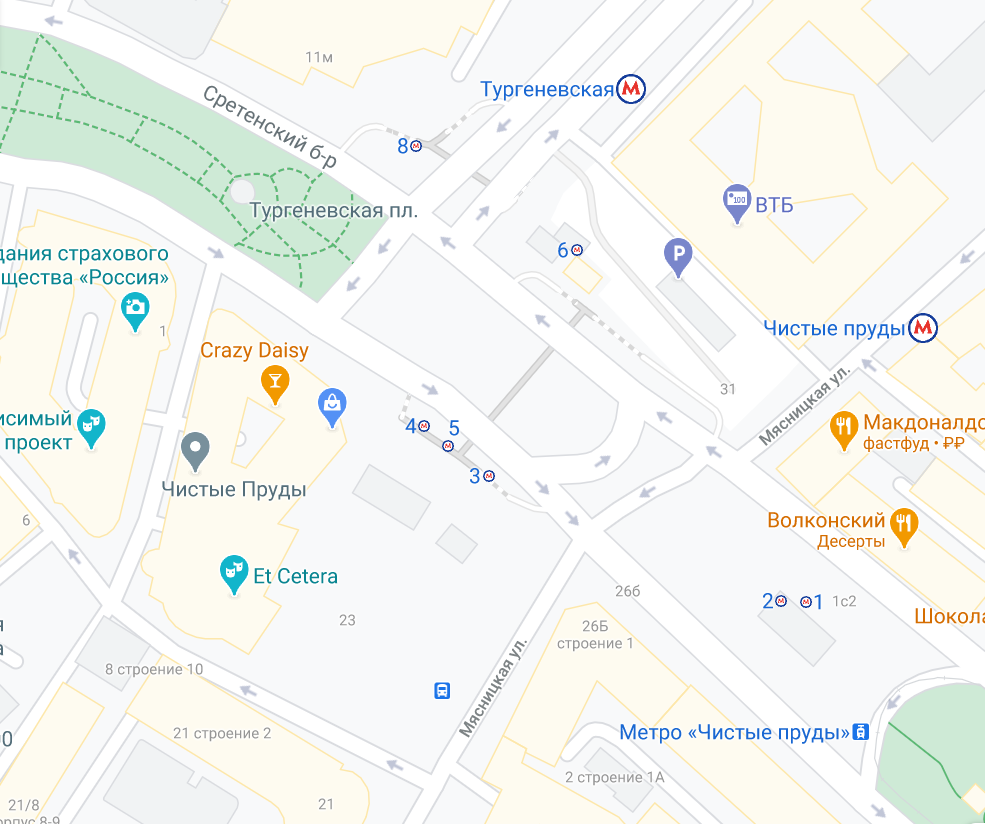
Chistye Prudy (Russian: Чи́стые пруды́, English: Clean Ponds) is a Moscow Metro station in the Basmanny District, Central Administrative Okrug, Moscow. It is on the Sokolnicheskaya Line, between Lubyanka and Krasnye Vorota stations. Chistye Prudy was opened on 15 May 1935 as a part of the first segment of the Metro. The station lies beneath Myasnitskaya Street, close to Turgenevskaya Square and the Clean Ponds, after which the station was named. It was the deepest station in Moscow Metro from 1935 until 1938.
Though planned to be a three-vaulted station with a full-length central hall (similar to Krasnye Vorota and Okhotny Ryad), Chistye Prudy was built instead according to a London Underground type design with two passages at either end of the station connecting the platforms. The outer platform vaults were finished to give the impression that a central hall did in fact exist, with what appeared to be a row of dark marble pylons. However, all of the archways except those at either end of the platform were barricaded. The architect of the initial station was Nikolai Kolli who worked with Le Corbusier on the nearby Tsentrosoyuz building.
During World War II the station was closed and its platforms were fenced off with plywood for use as the headquarters of the Joint Staff and PVO Air Defence. All trains bypassed this station.
Chistye Prudy’s central hall was built in 1971 so that the station could become a transfer point to the Kaluzhsko-Rizhskaya Line. The architects for this project were N. Shukhareva, L. Popov, and A. Fokina. The new portion of the station was finished to resemble the original sections as closely as possible, maintaining its original character. Escalators were built in the centre of the platform to connect to Turgenevskaya.
Chistye Prudy is finished with dark grey Ufalei and white Koelga marble, with a dark granite platform. In 1989 the station’s outer walls were refinished with marble rather than ceramic tile to approximate the original design even more closely.
The station was named Kirovskaya from its opening until 1990, and there is still a bronze bust of Sergey Kirov at the end of the platform. In 1992 it was briefly called Myasnitskaya, but renamed a few days later into its current name.
A.Savin, Public domain, via Wikimedia Commons



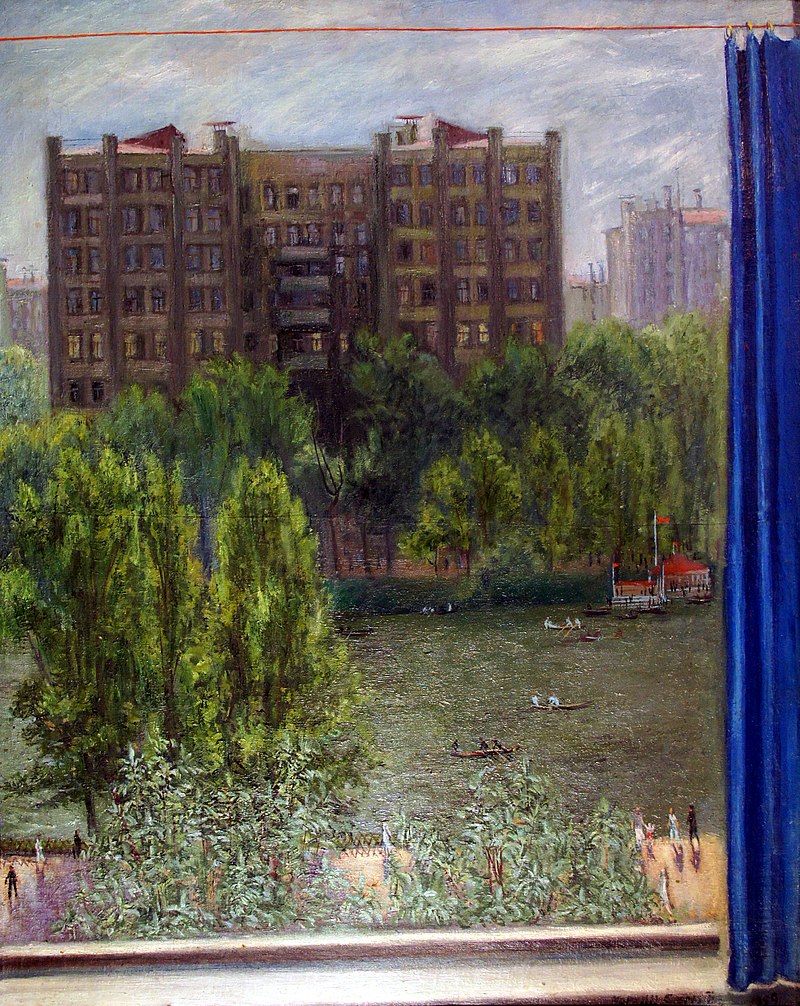
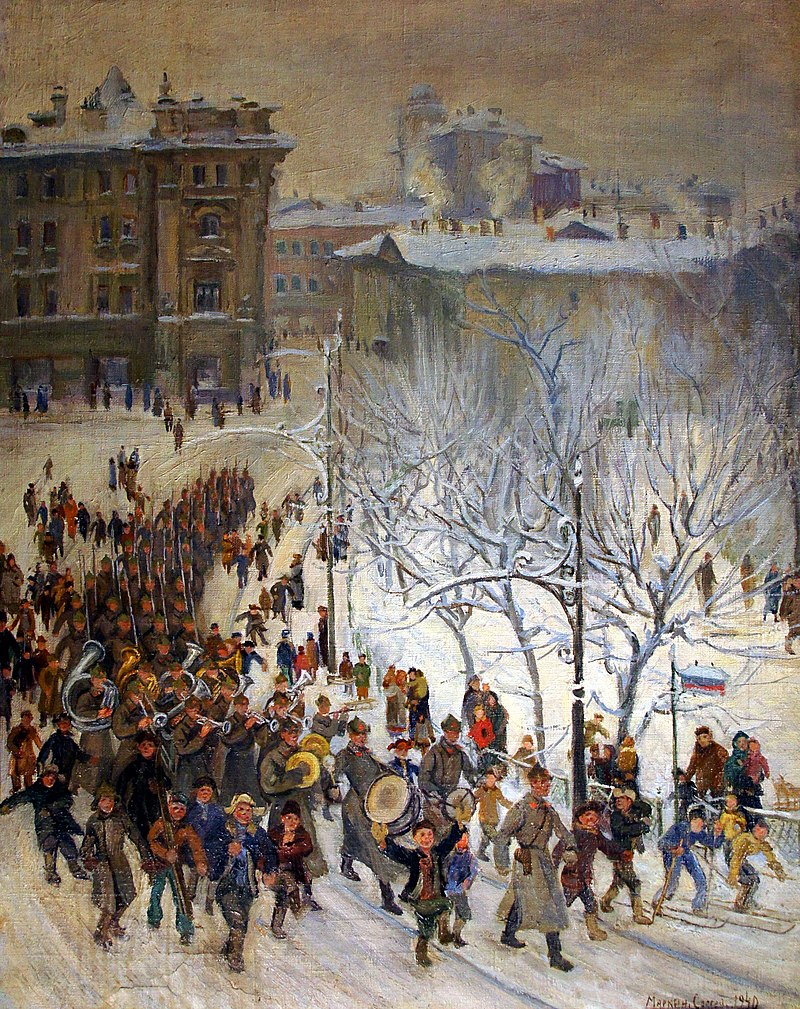
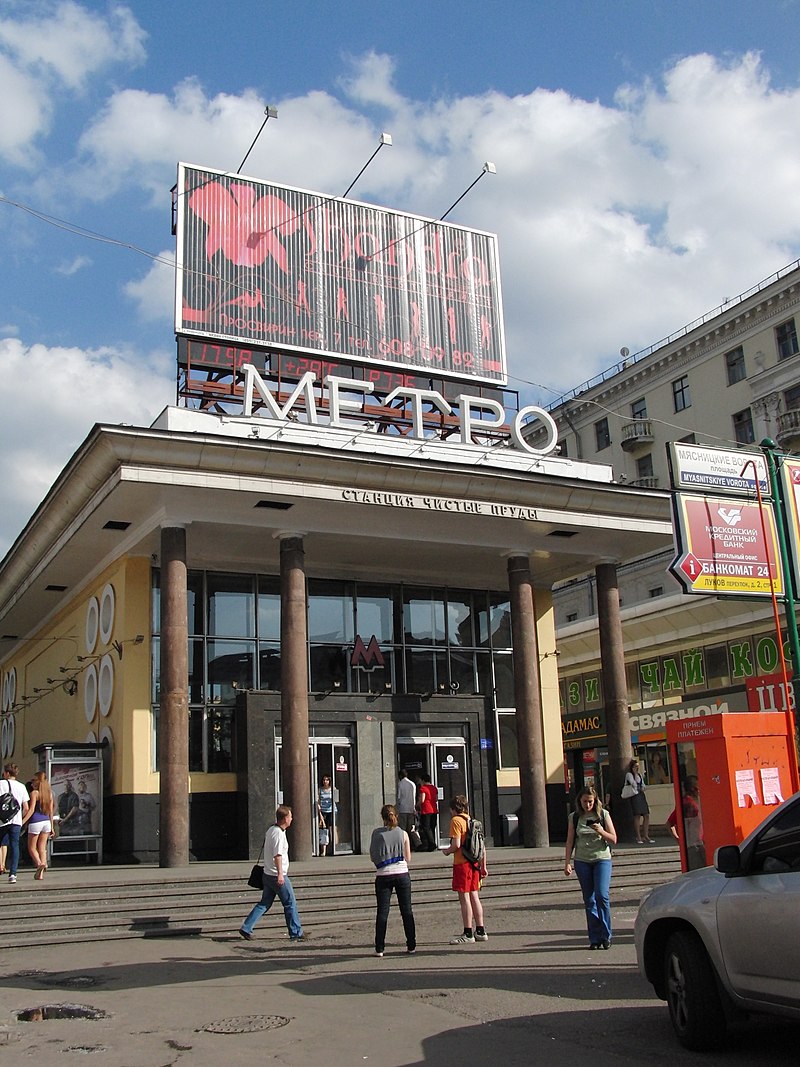
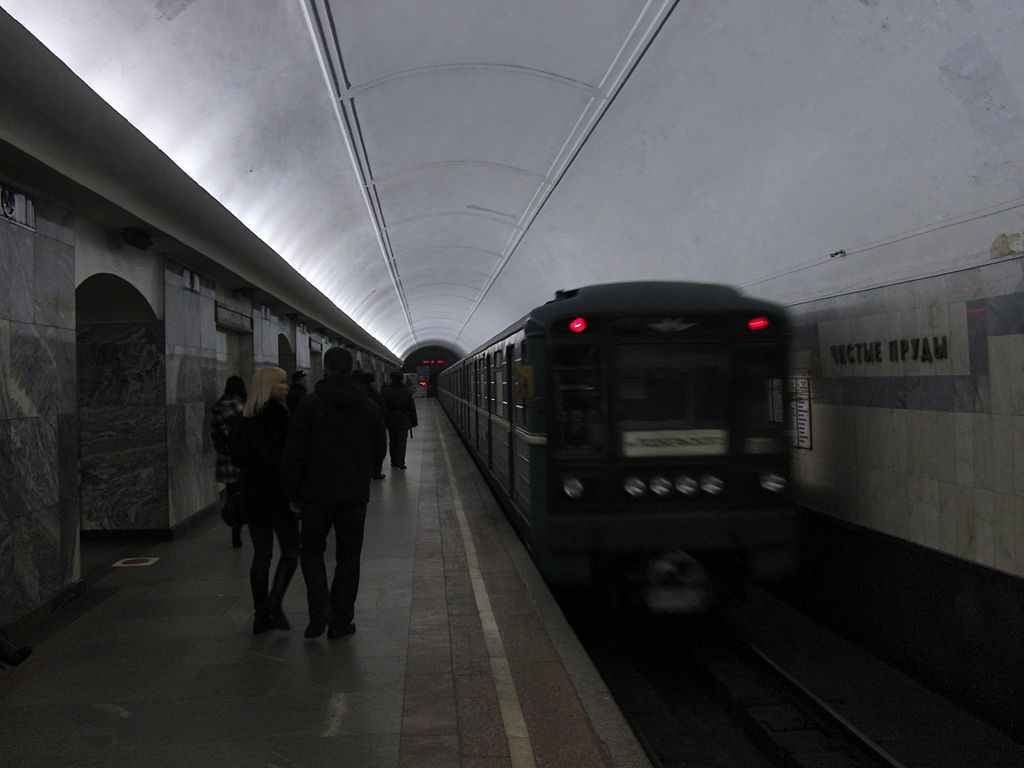

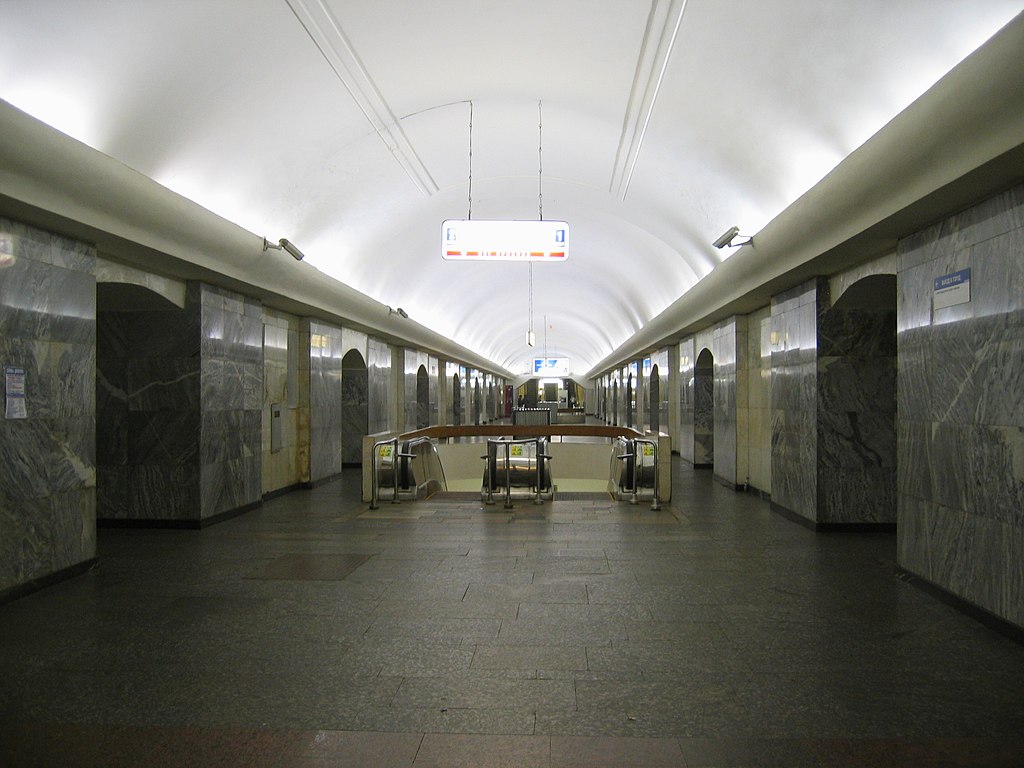
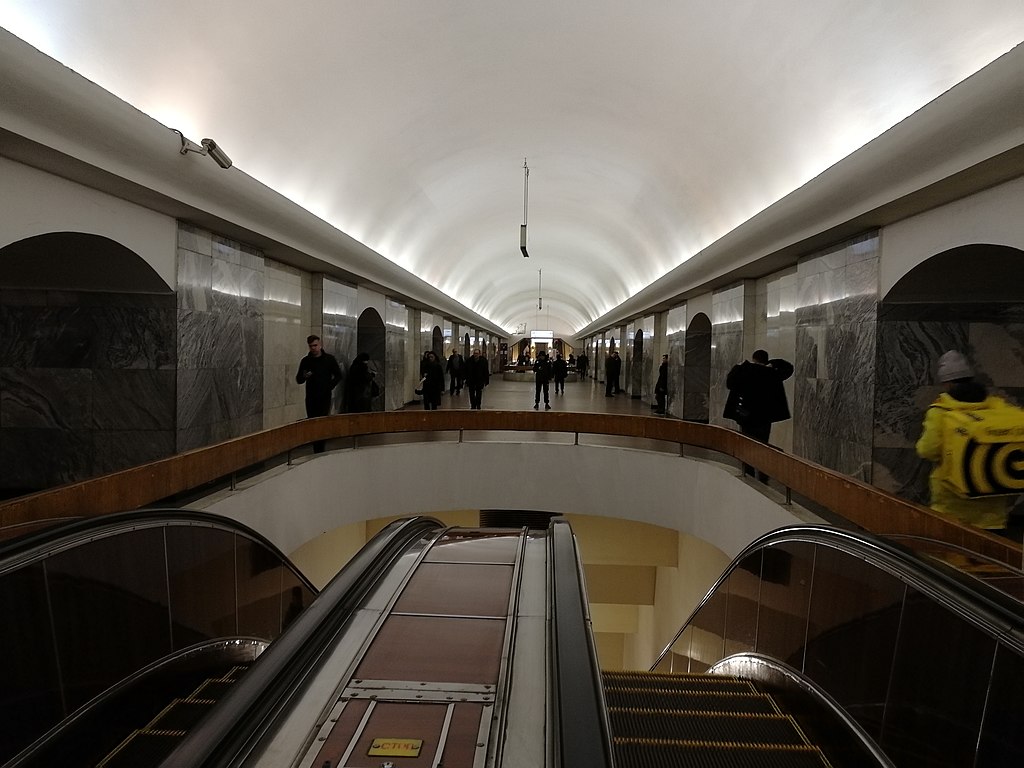

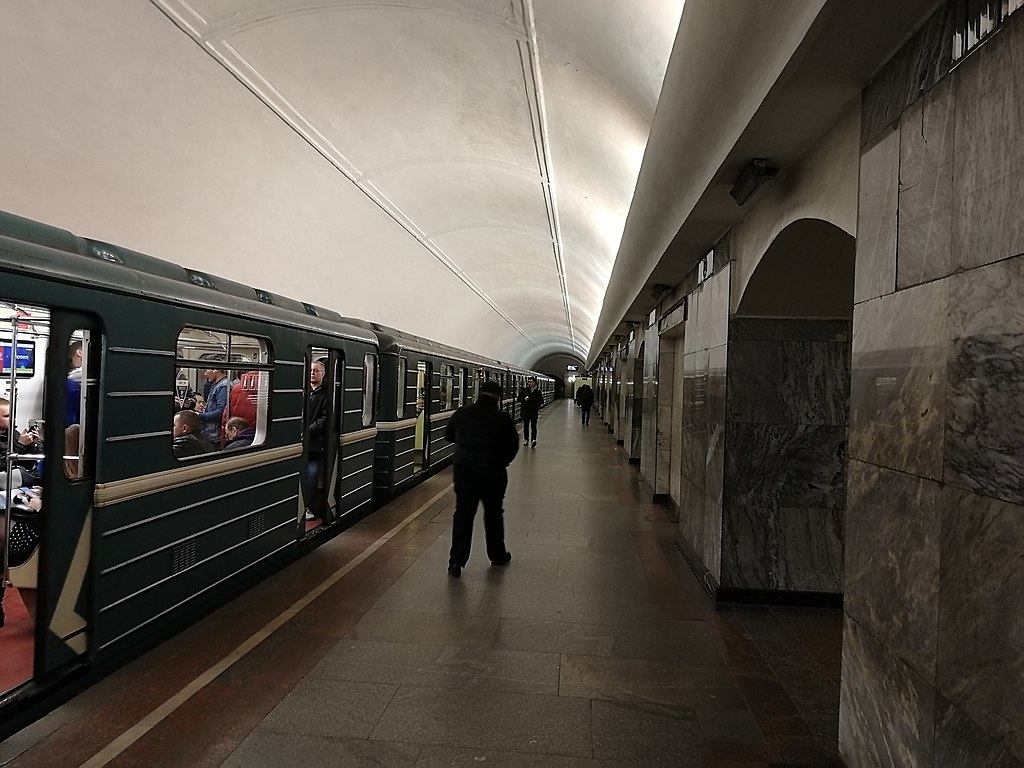
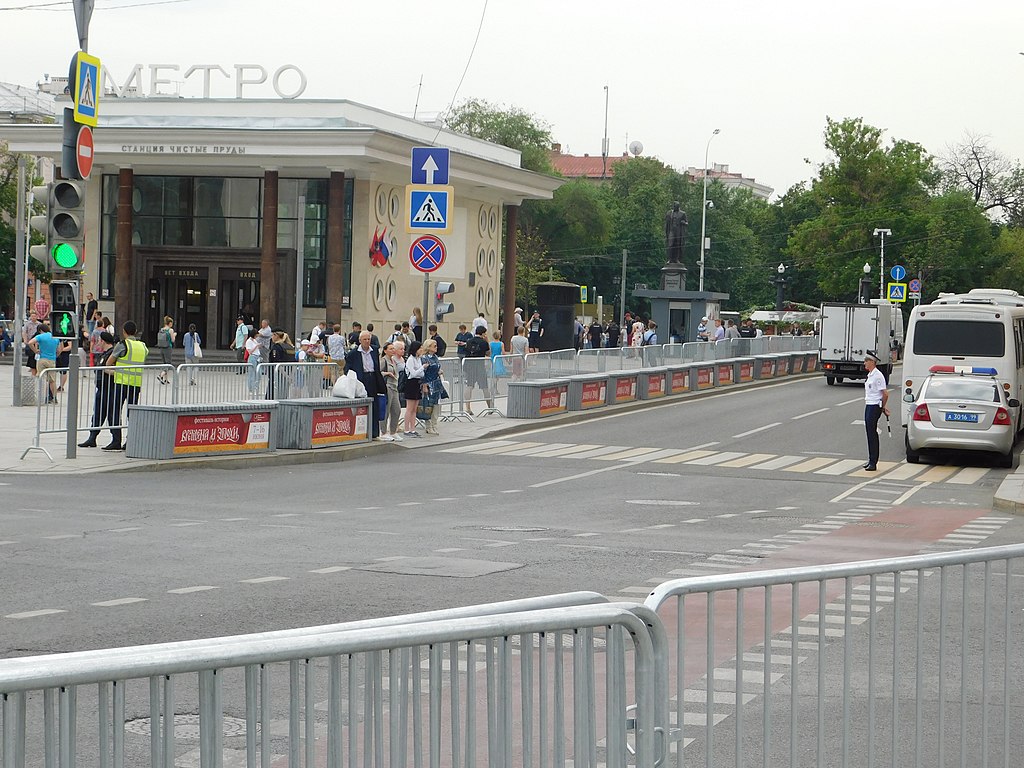
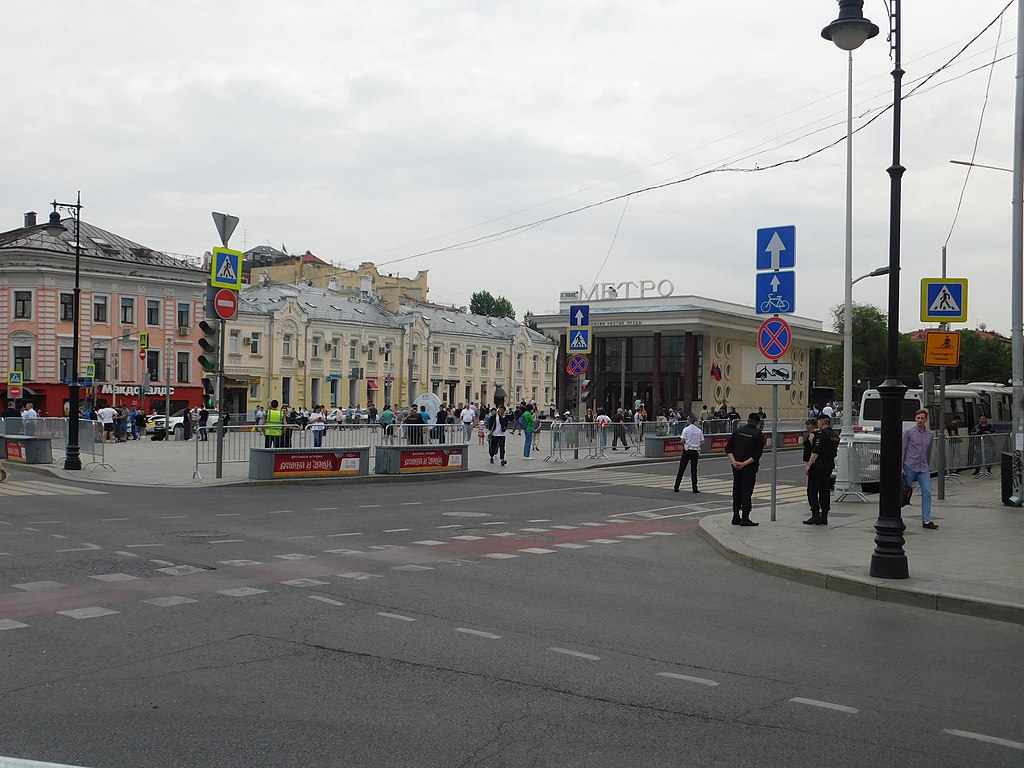
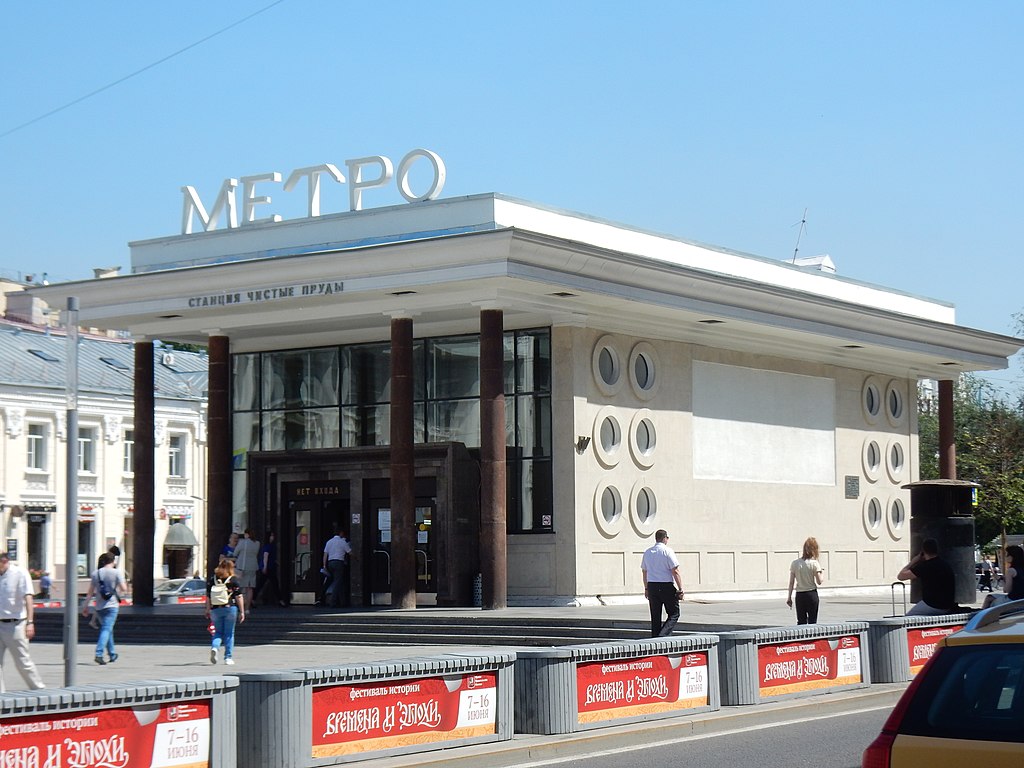

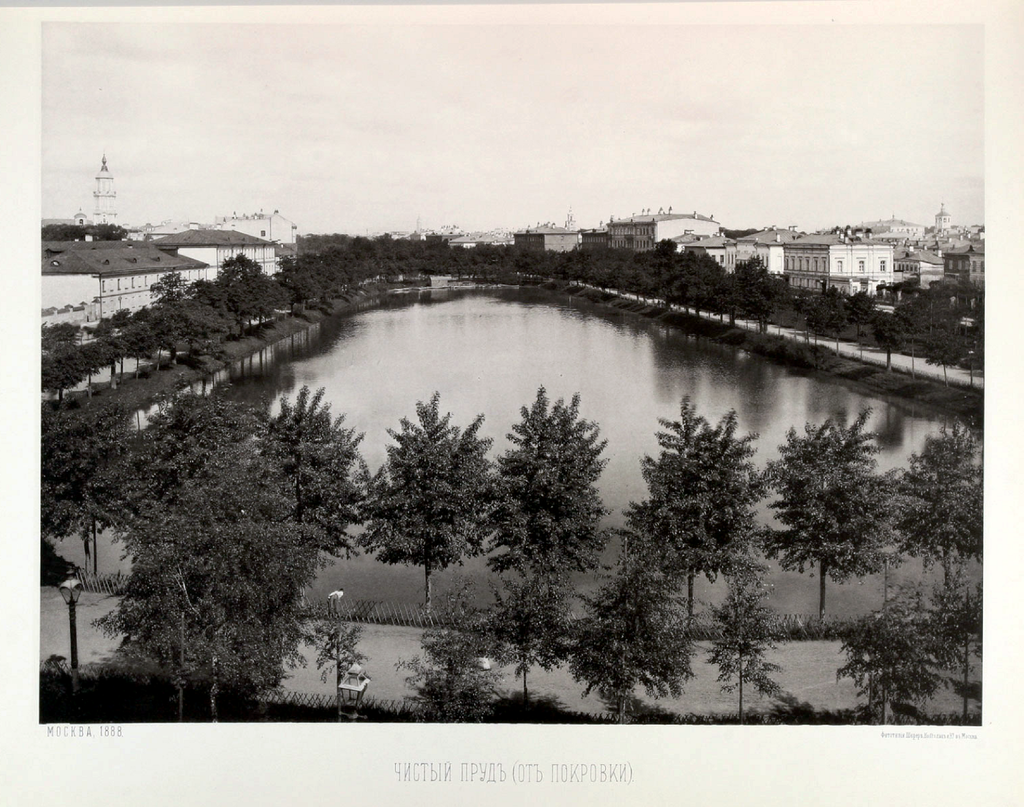
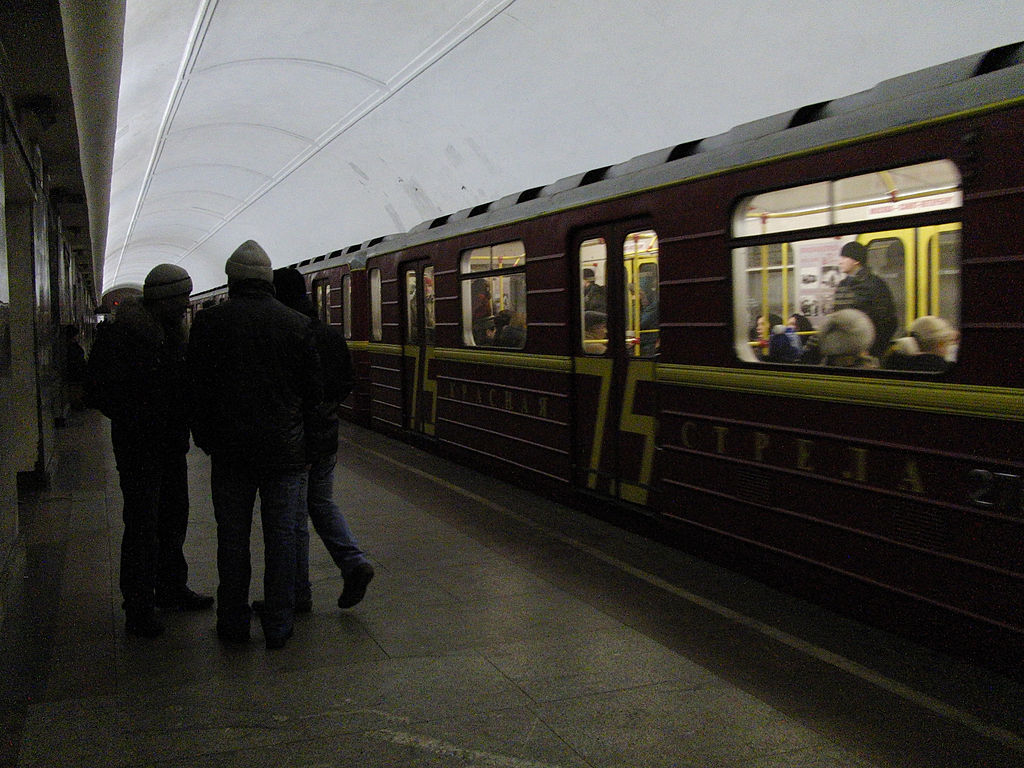

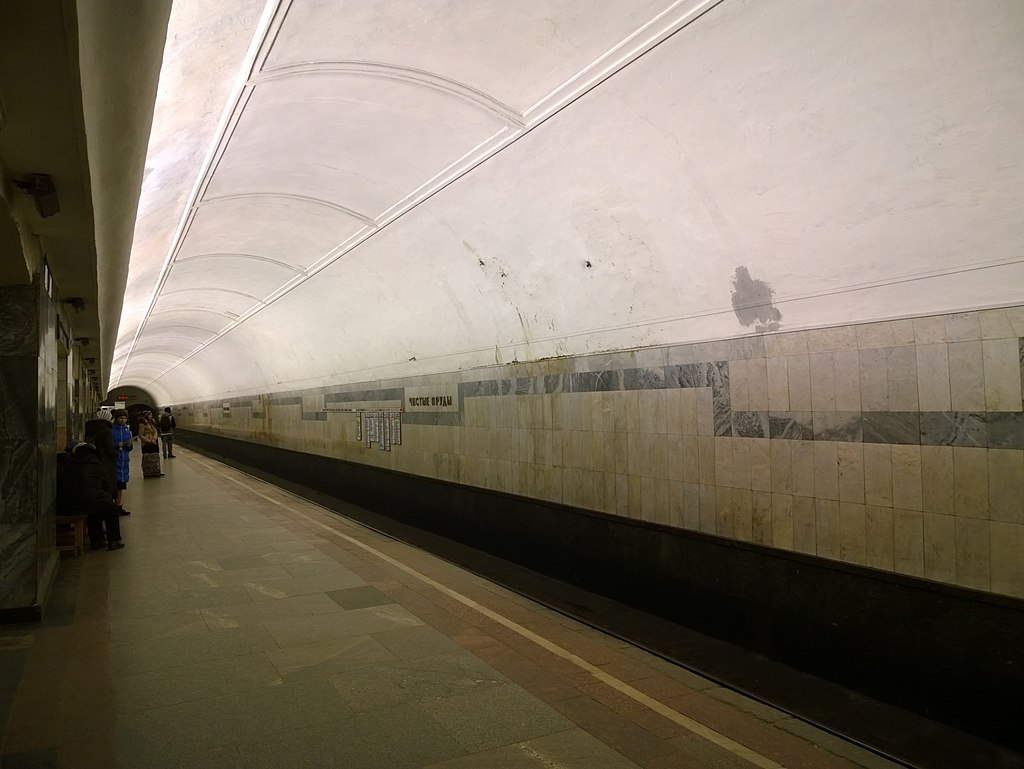
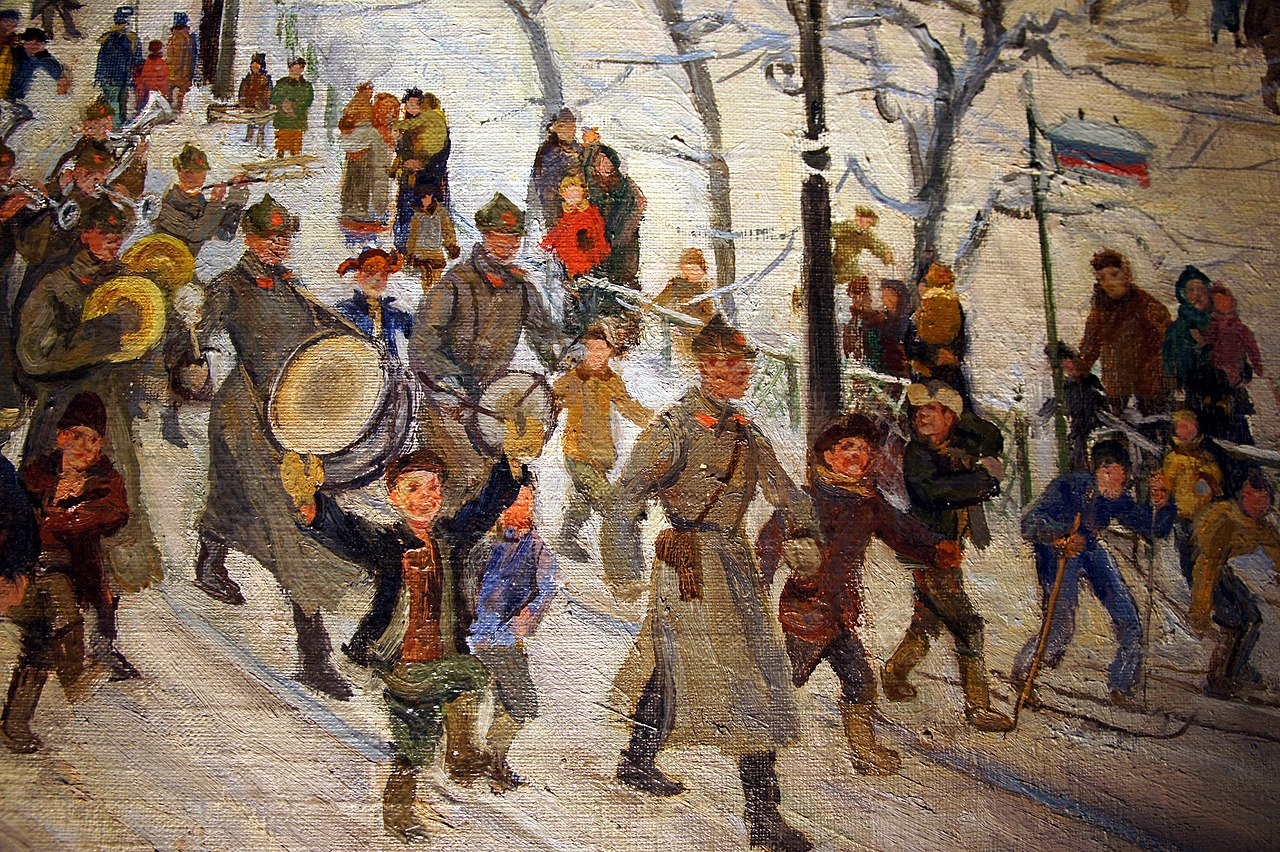
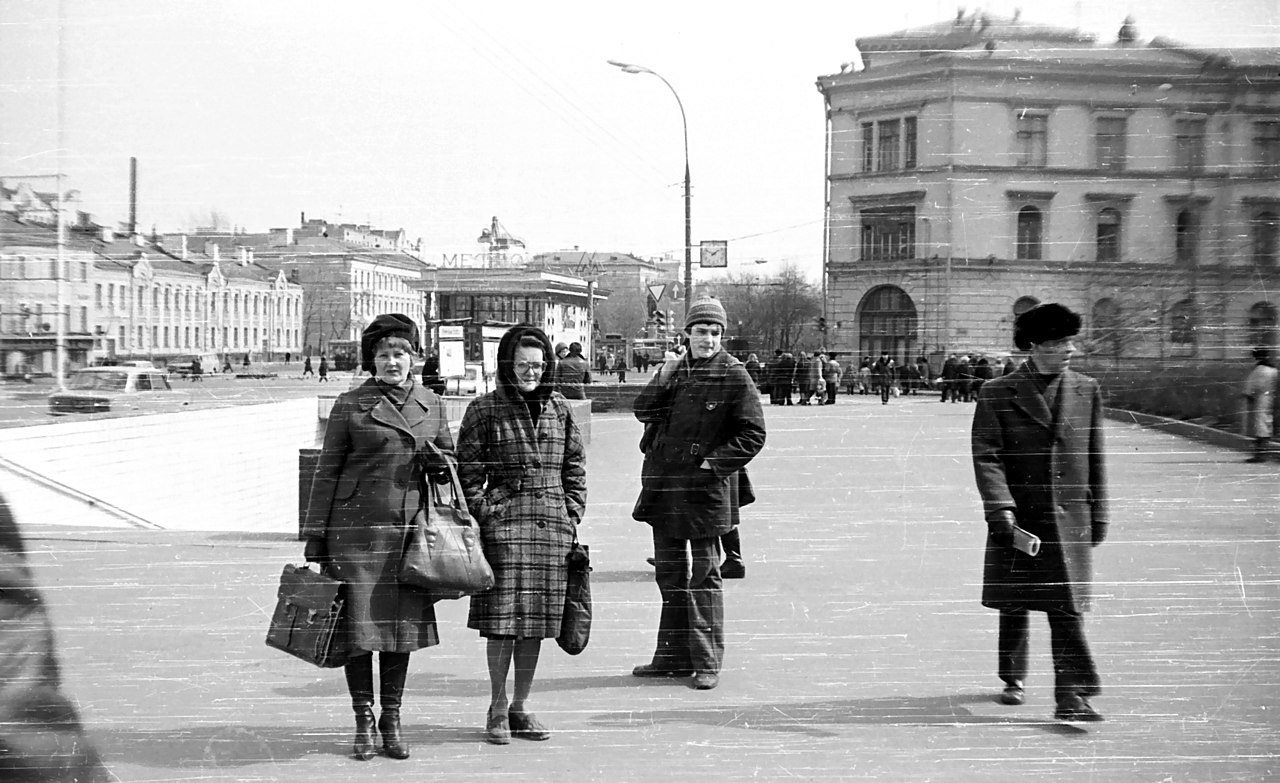



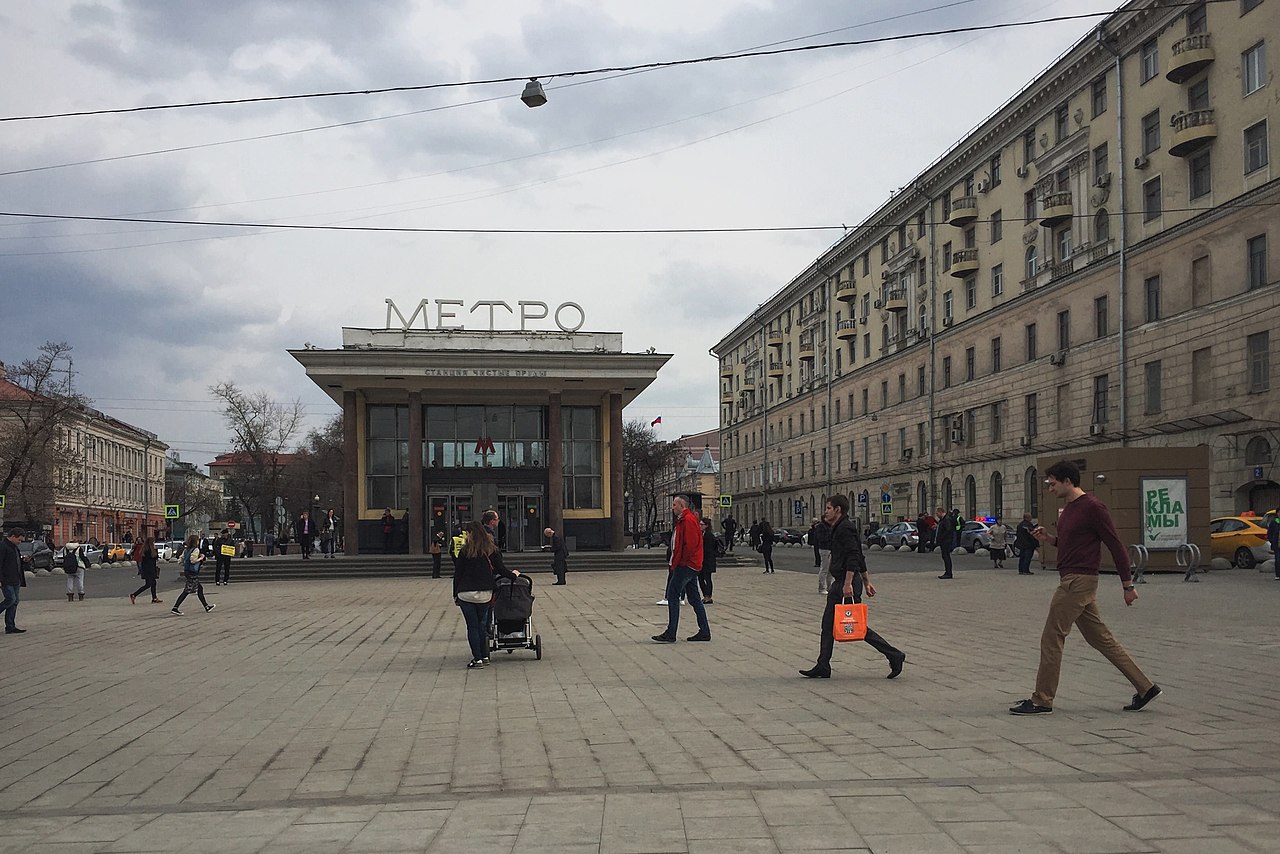
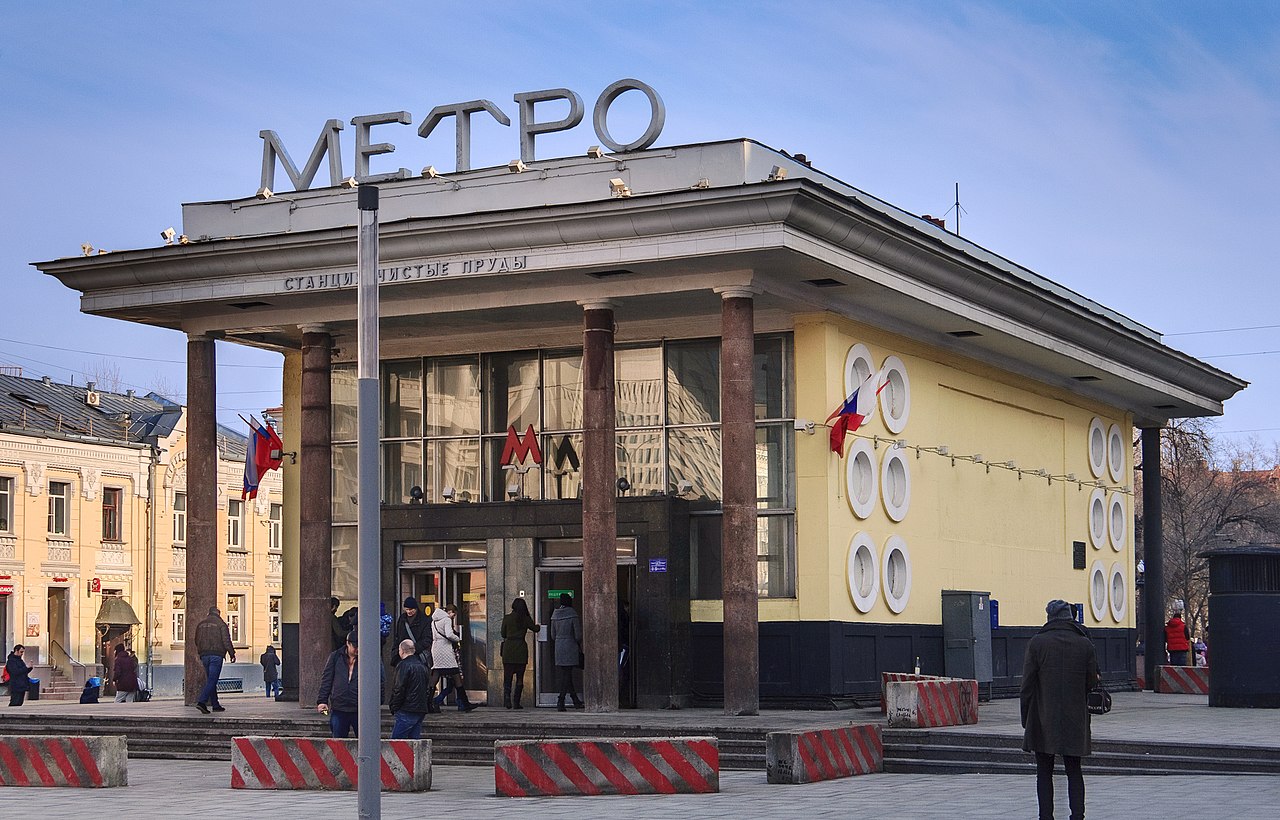
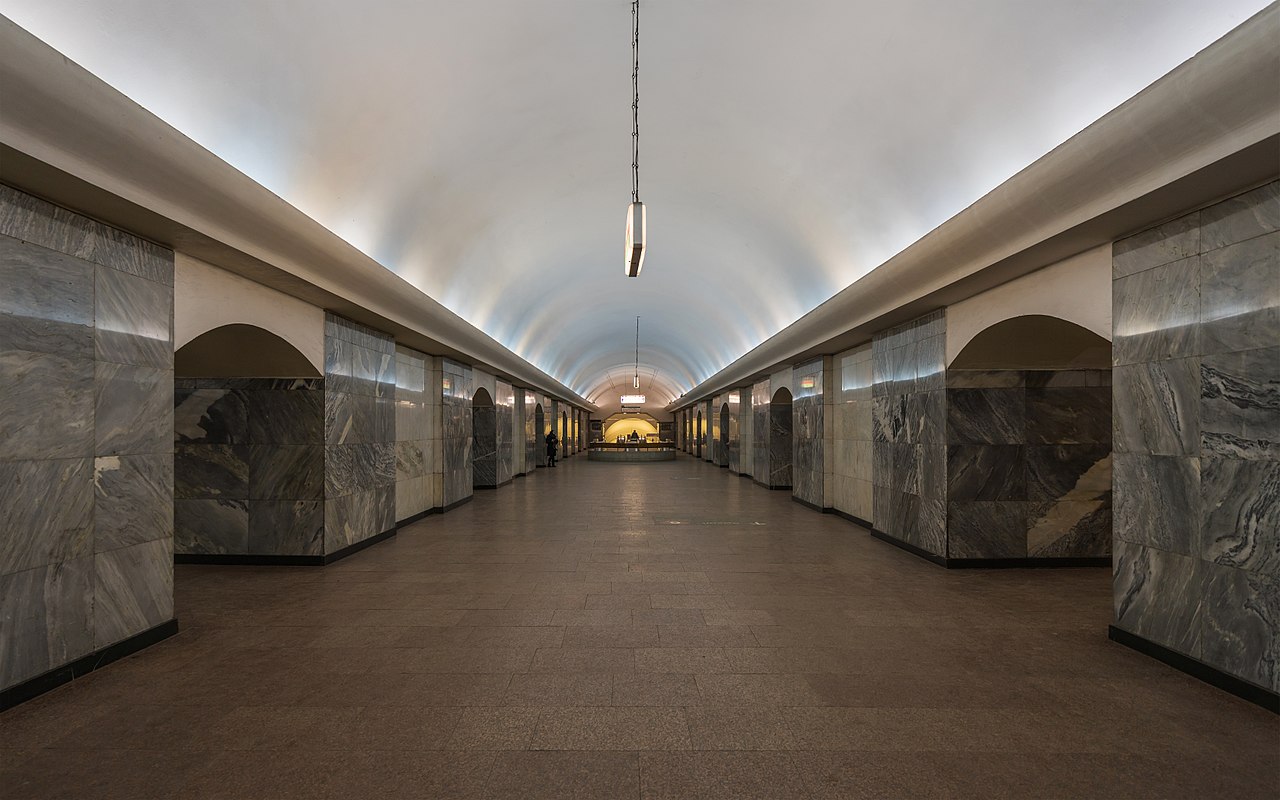
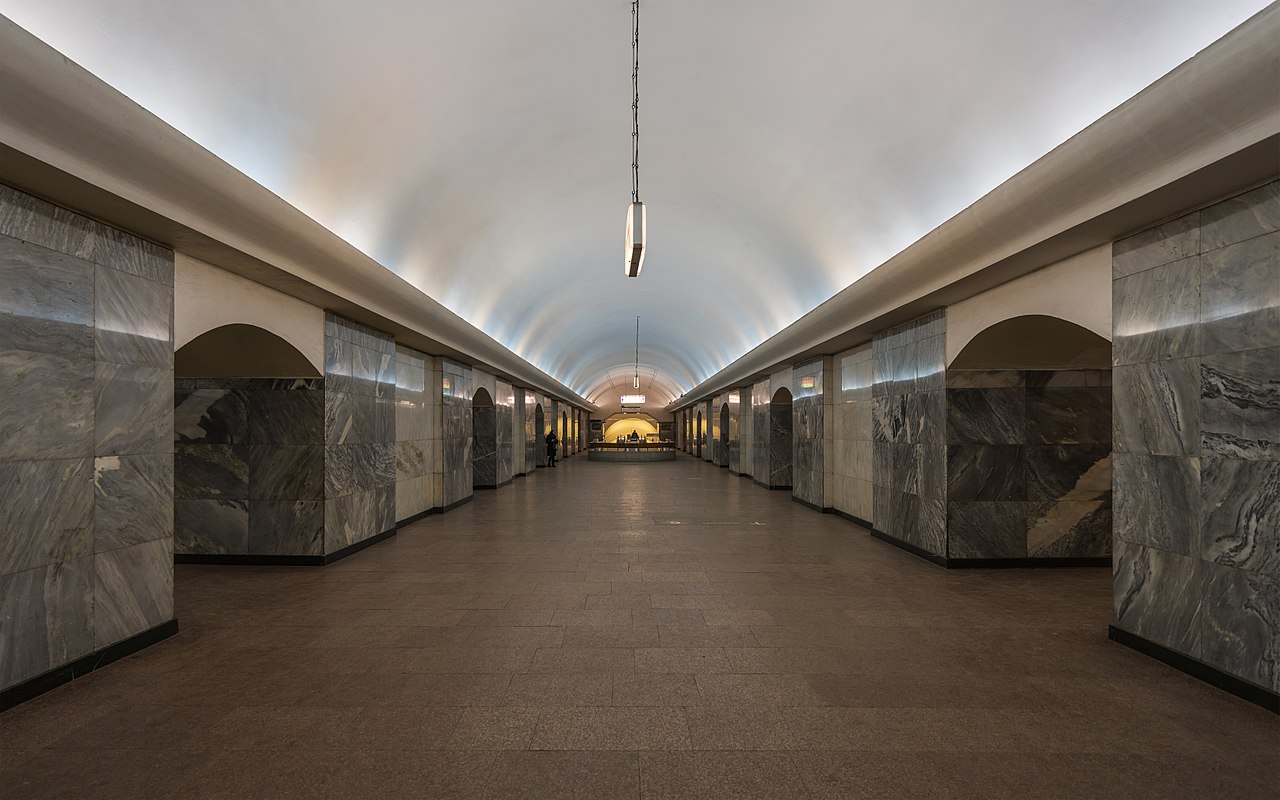
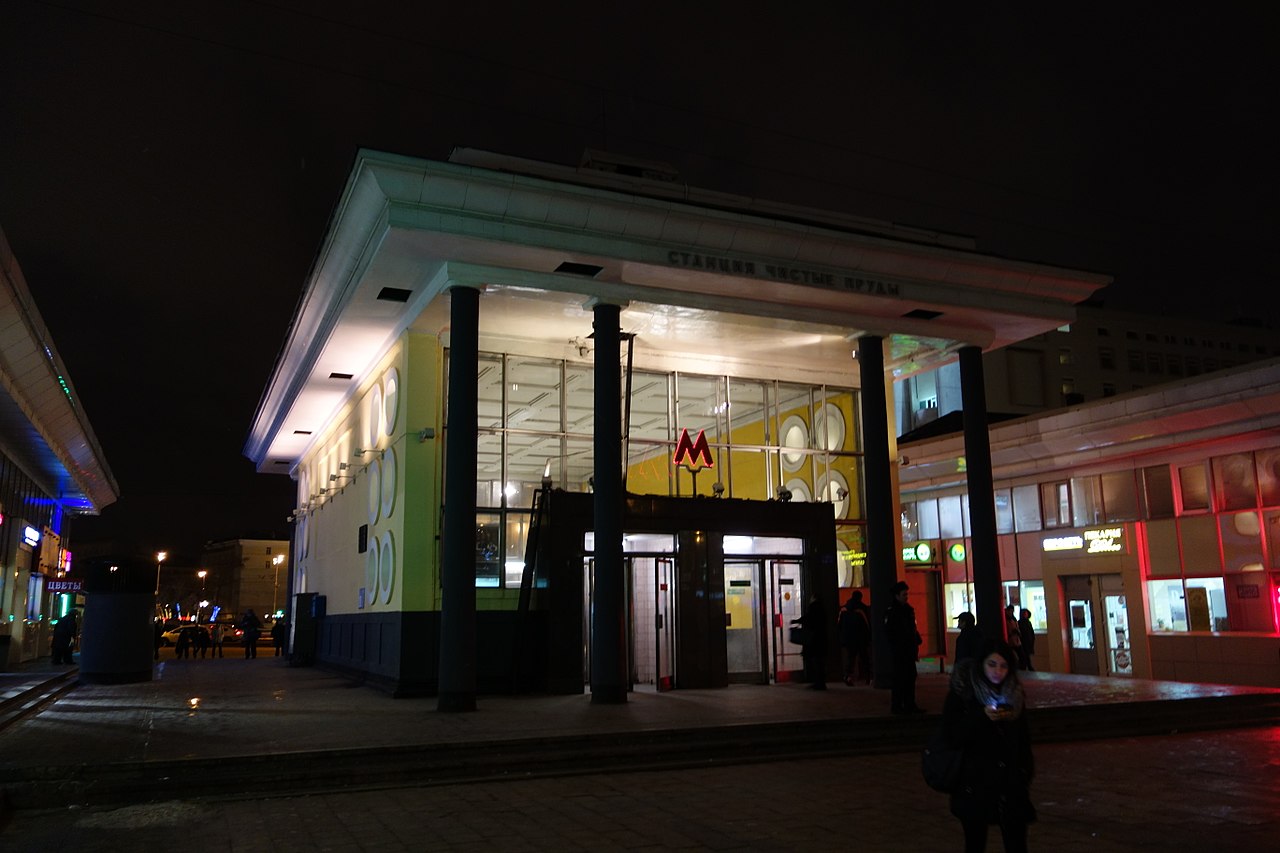
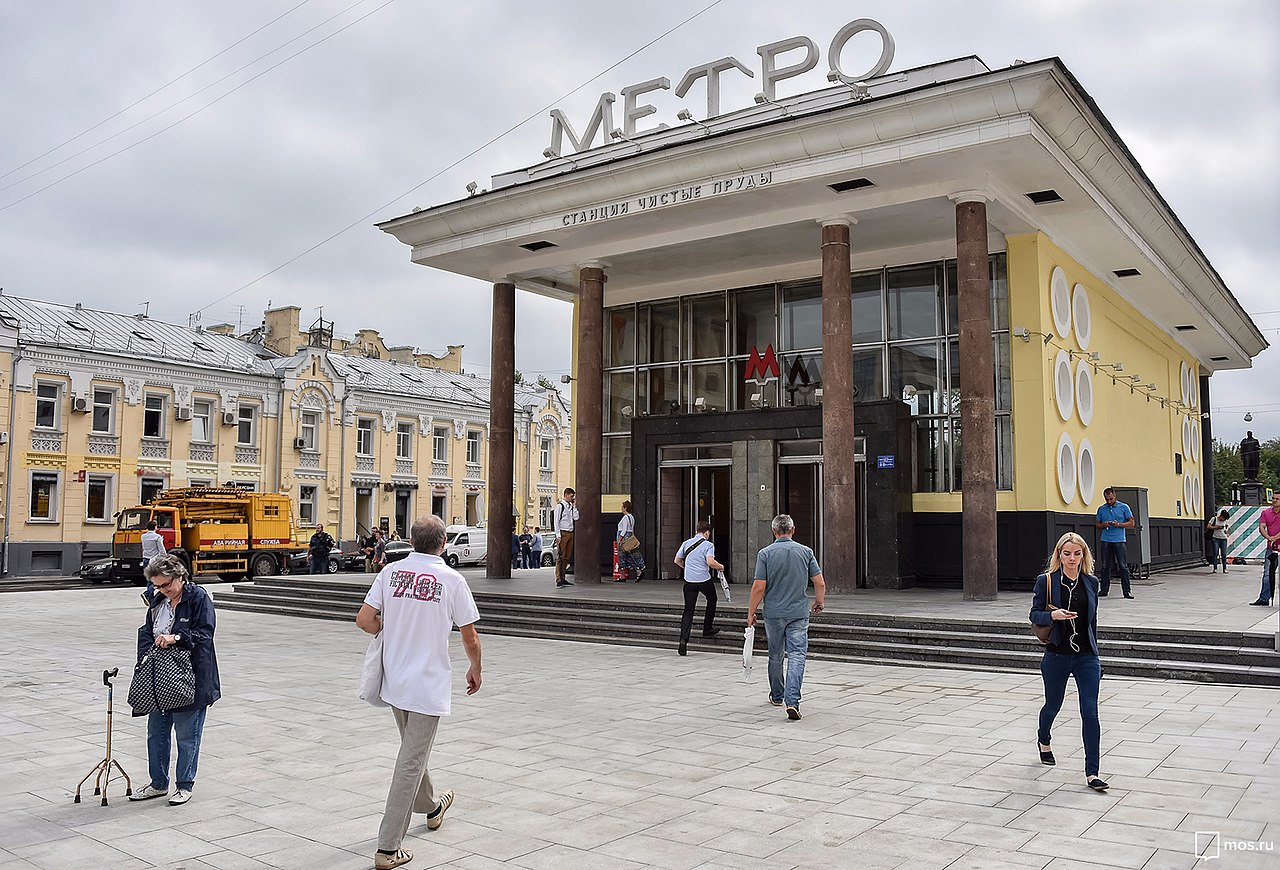
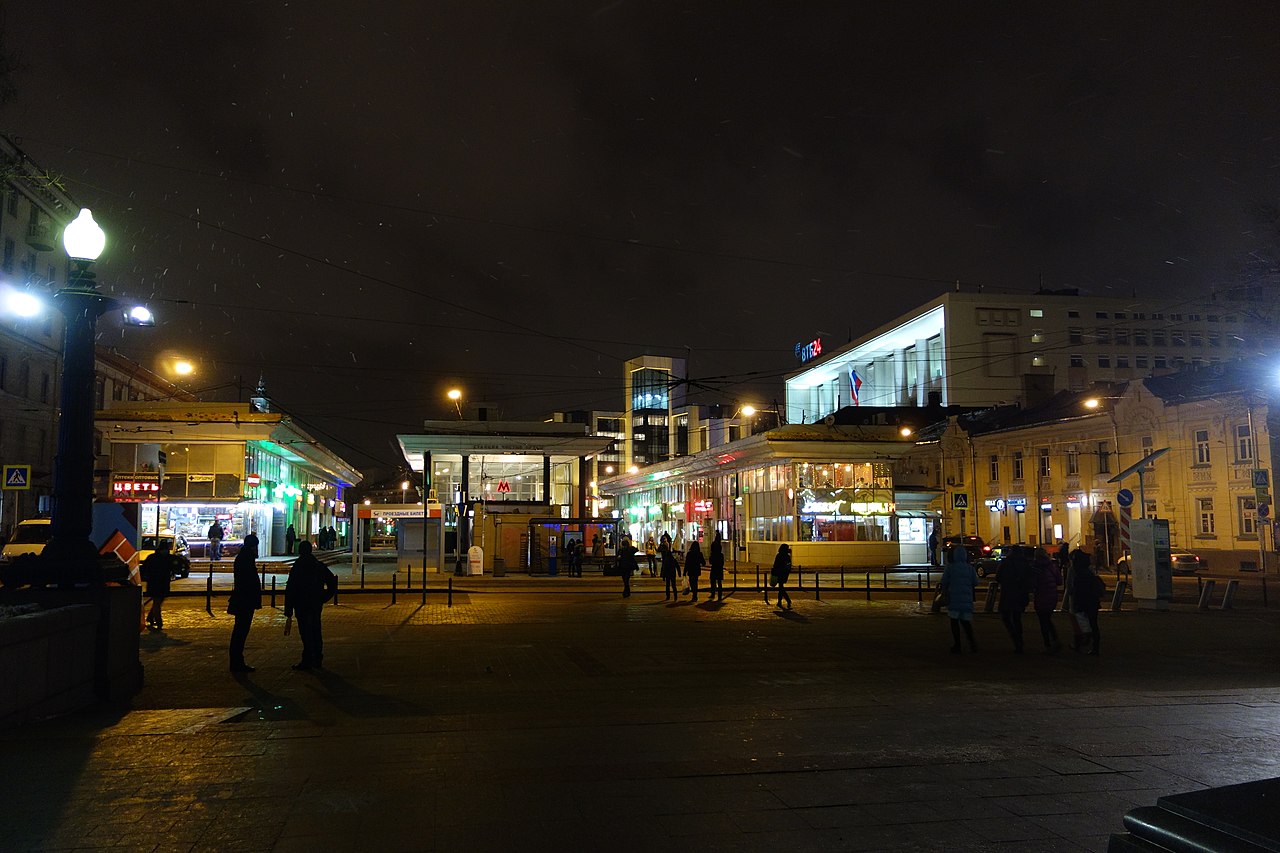

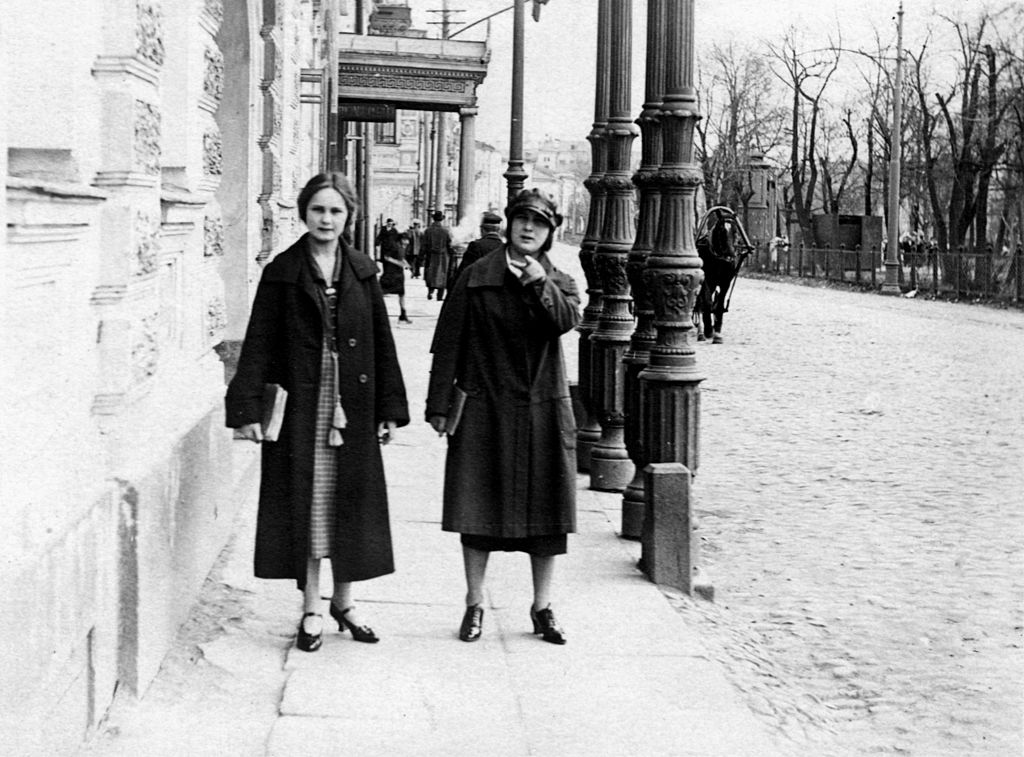
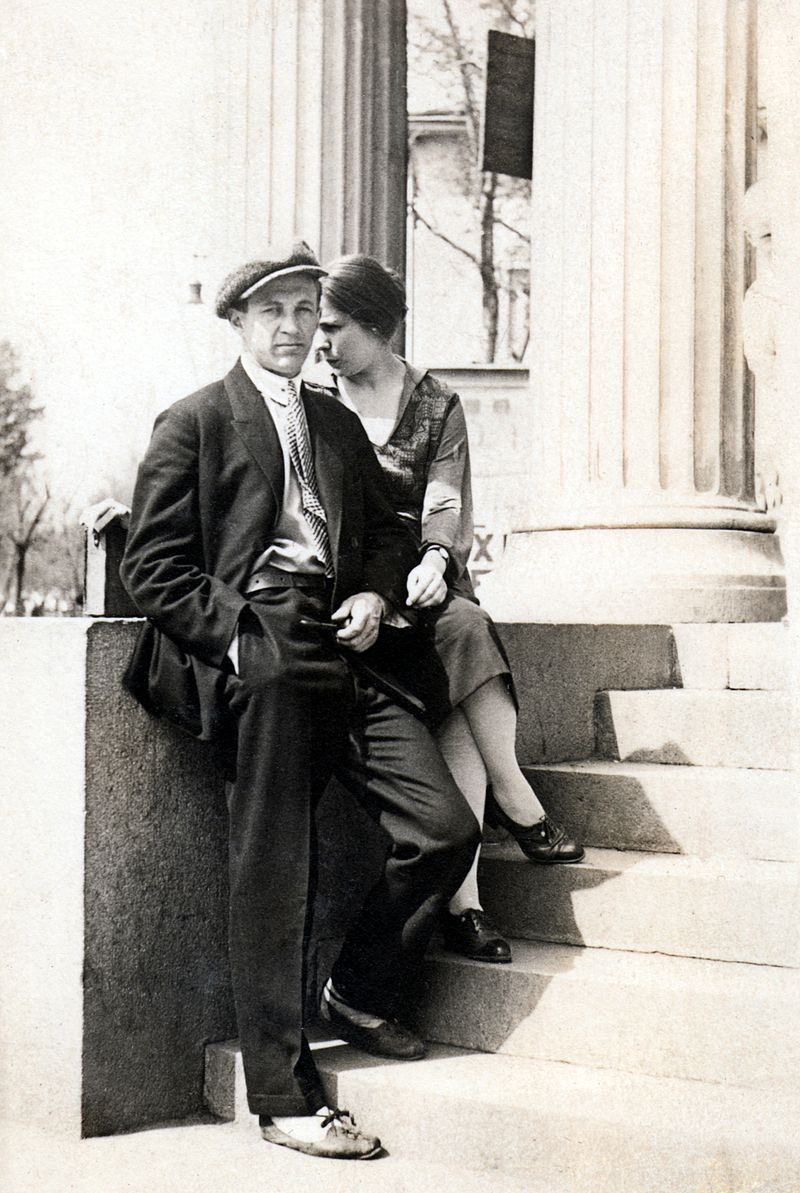
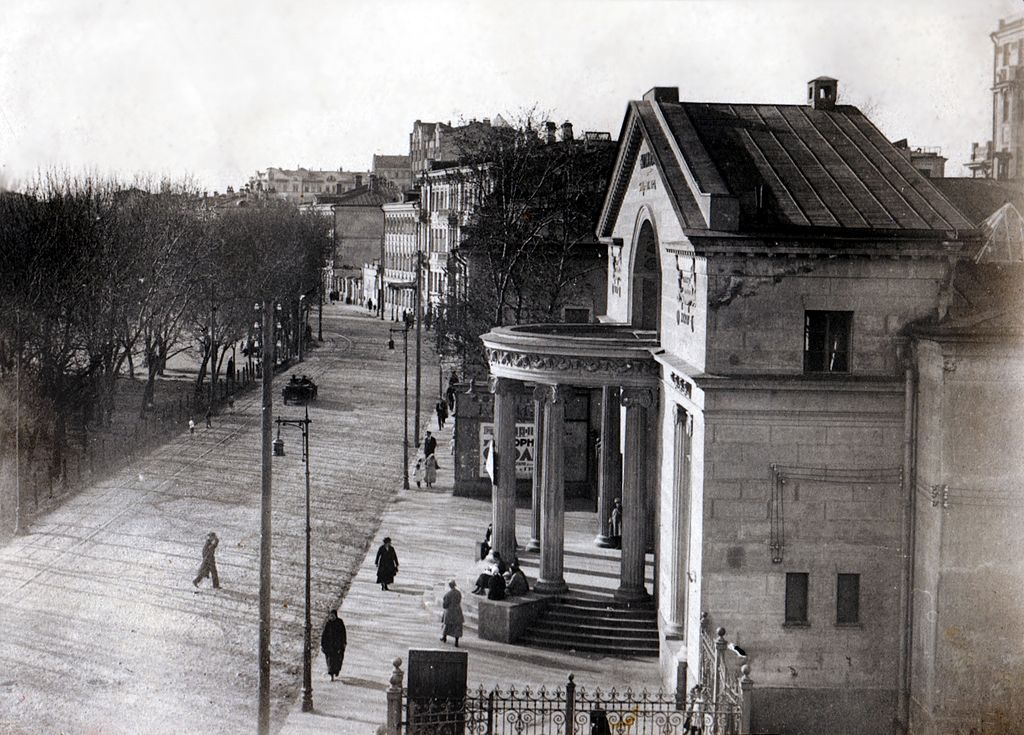

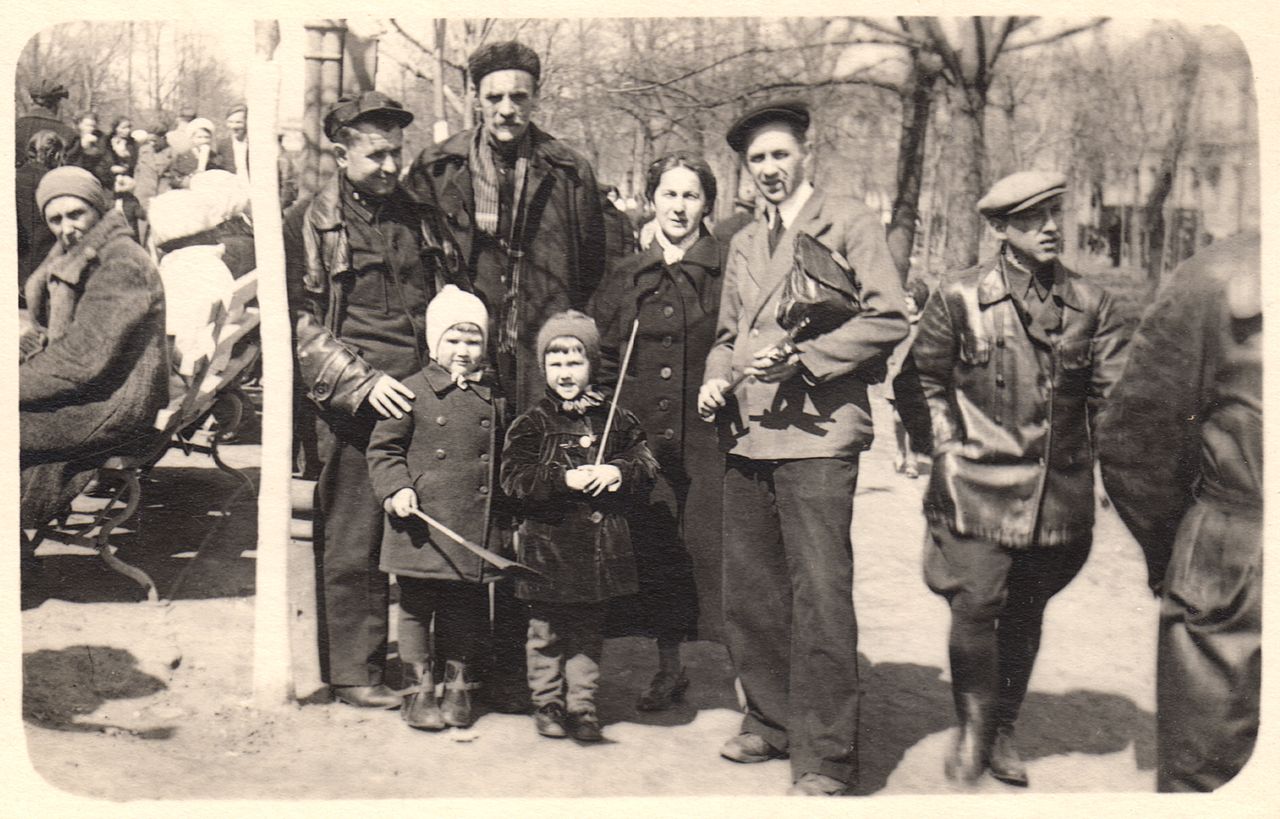
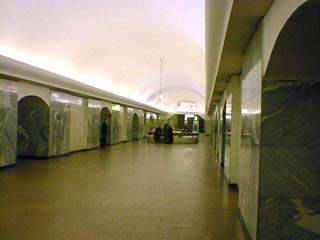

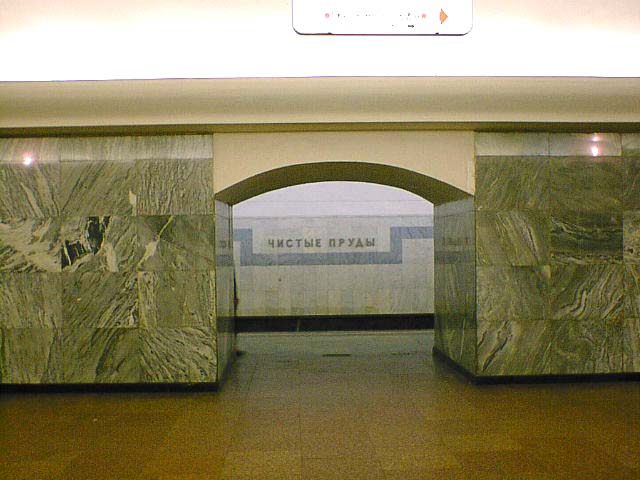
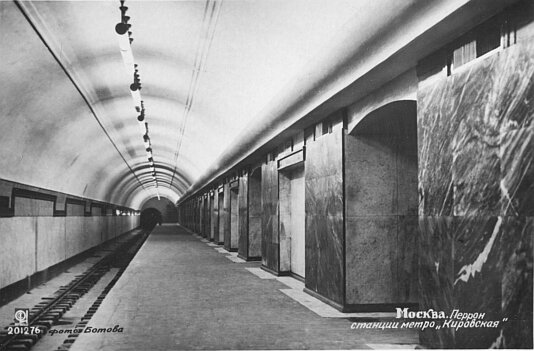

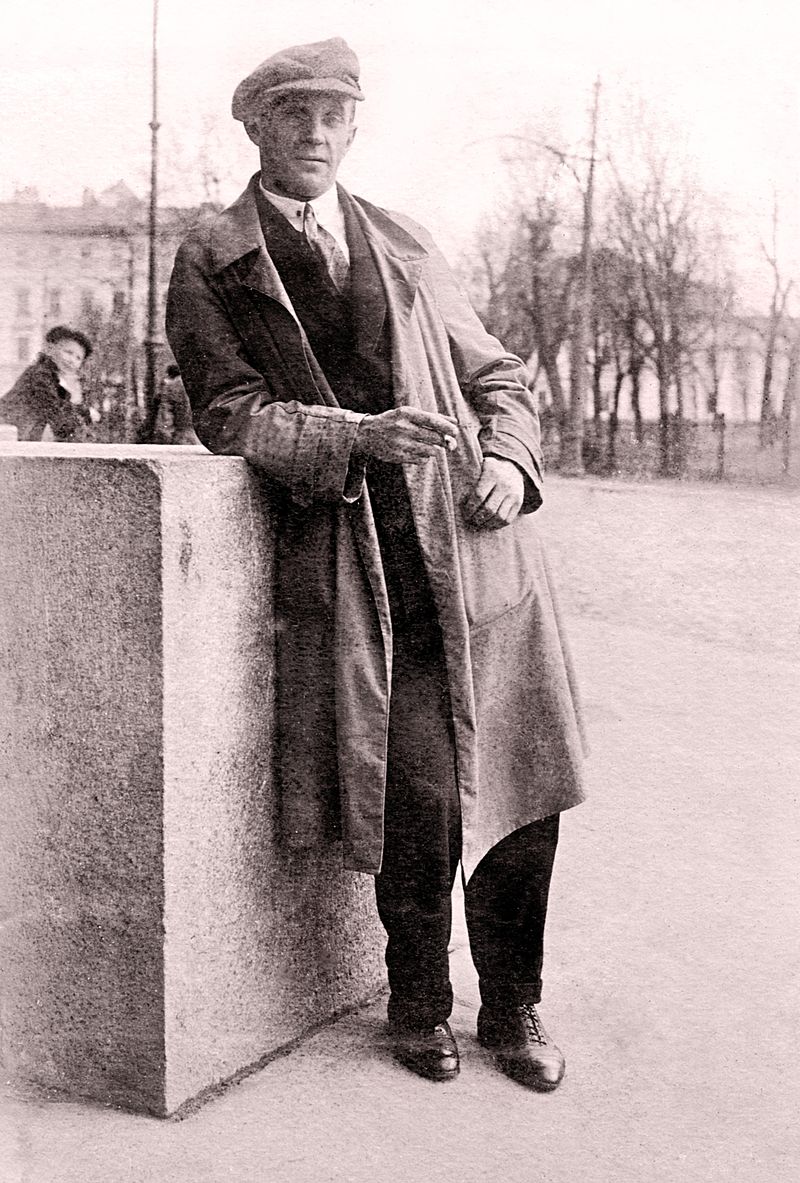
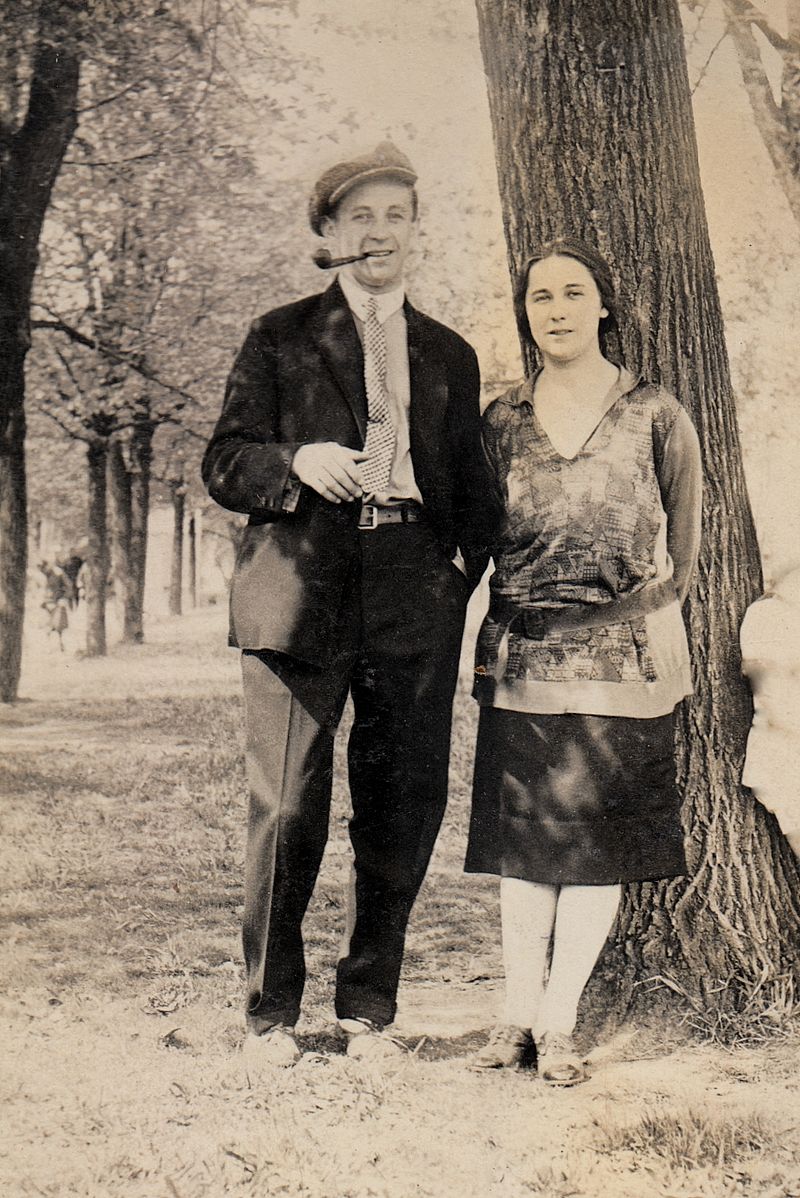


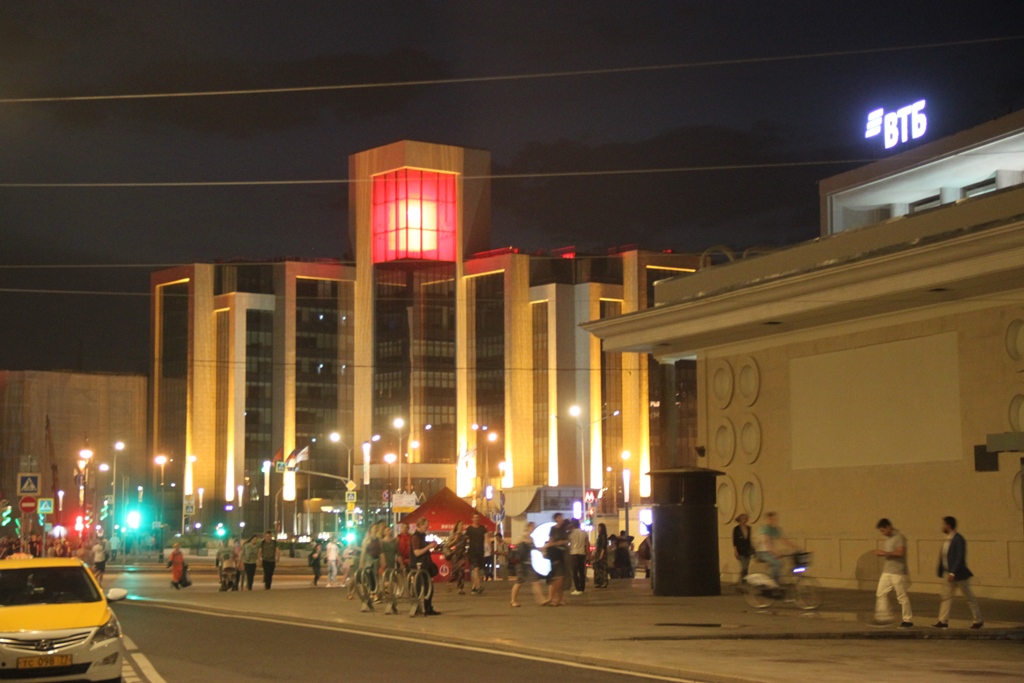
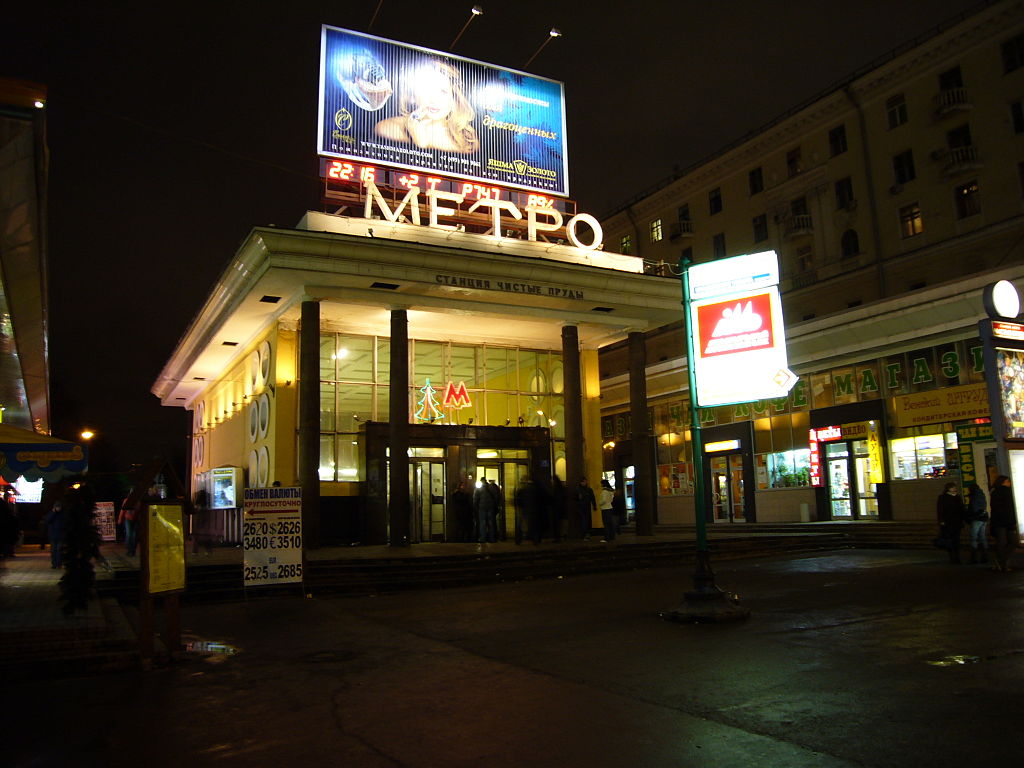
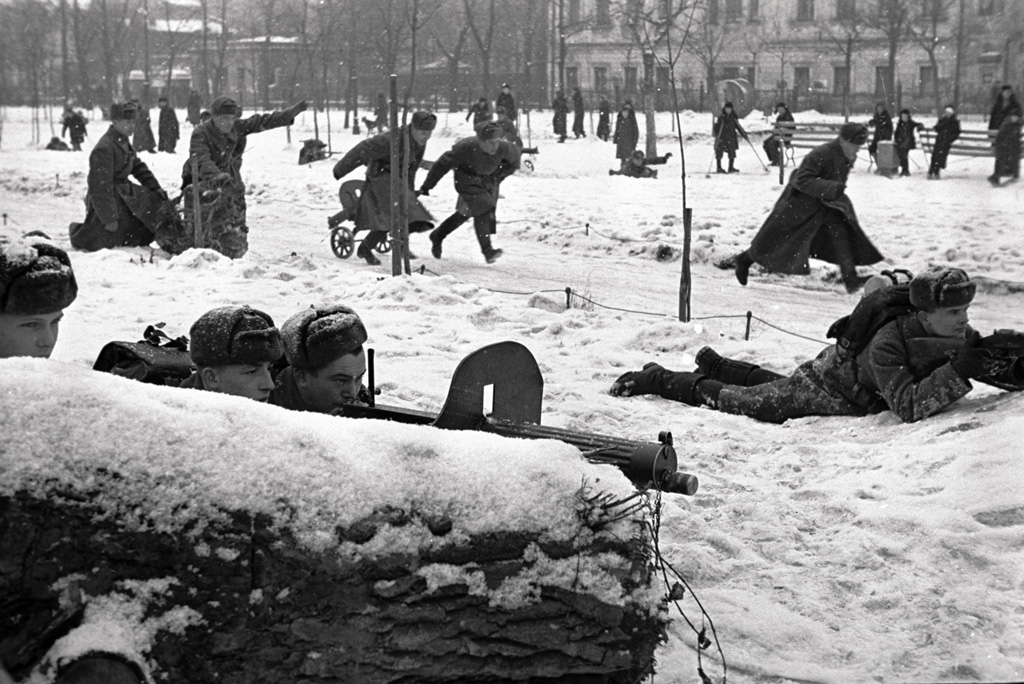
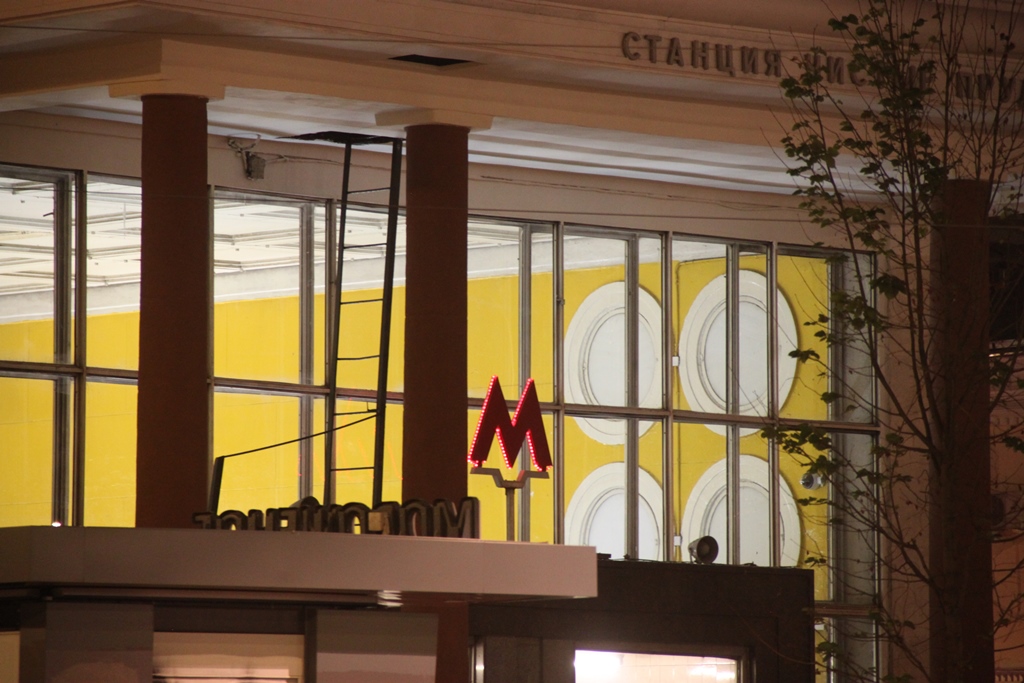
 Lev Nikolaevich Popov
Lev Nikolaevich Popov Anna Fyodorovna Fokina
Anna Fyodorovna Fokina